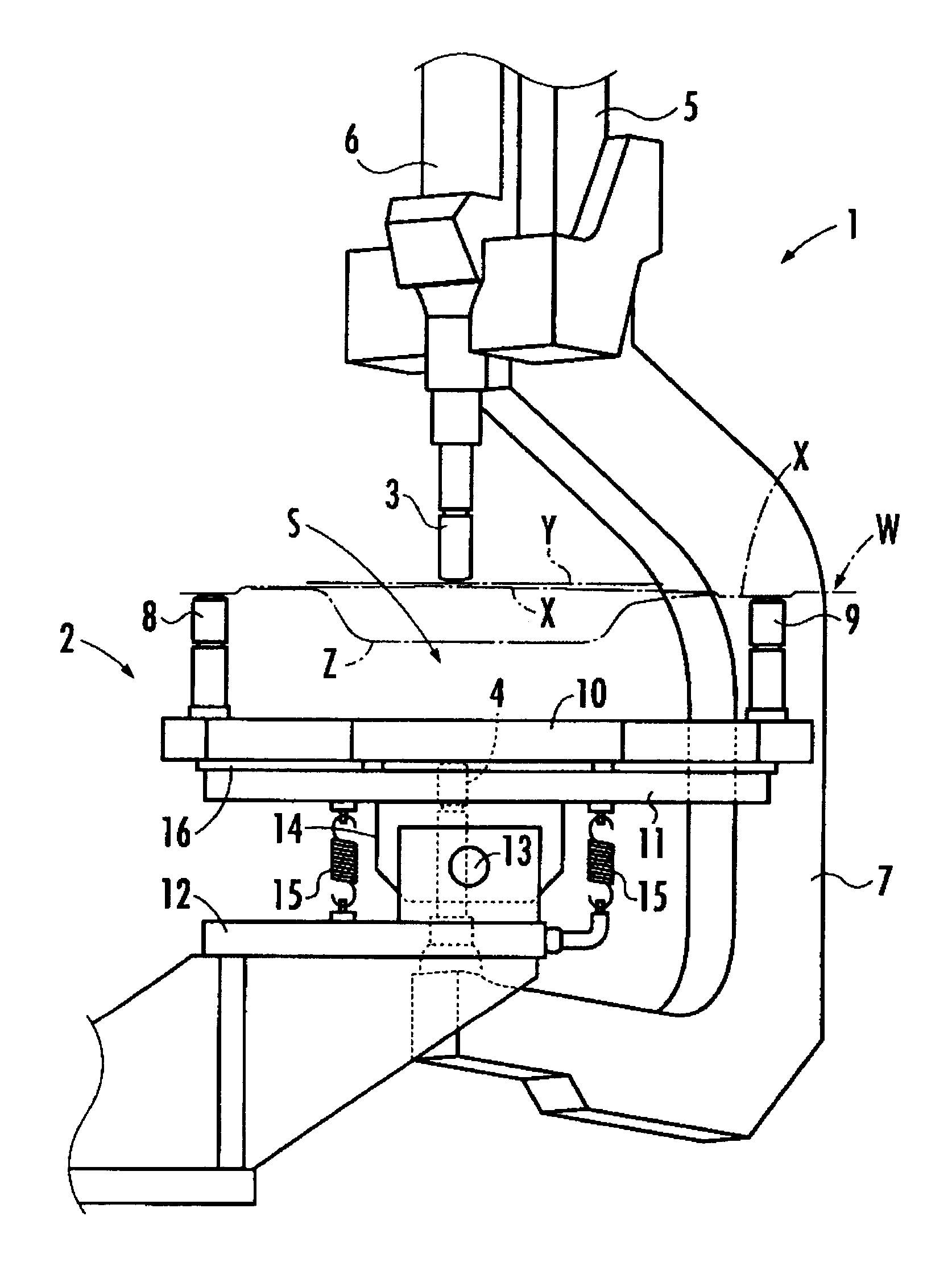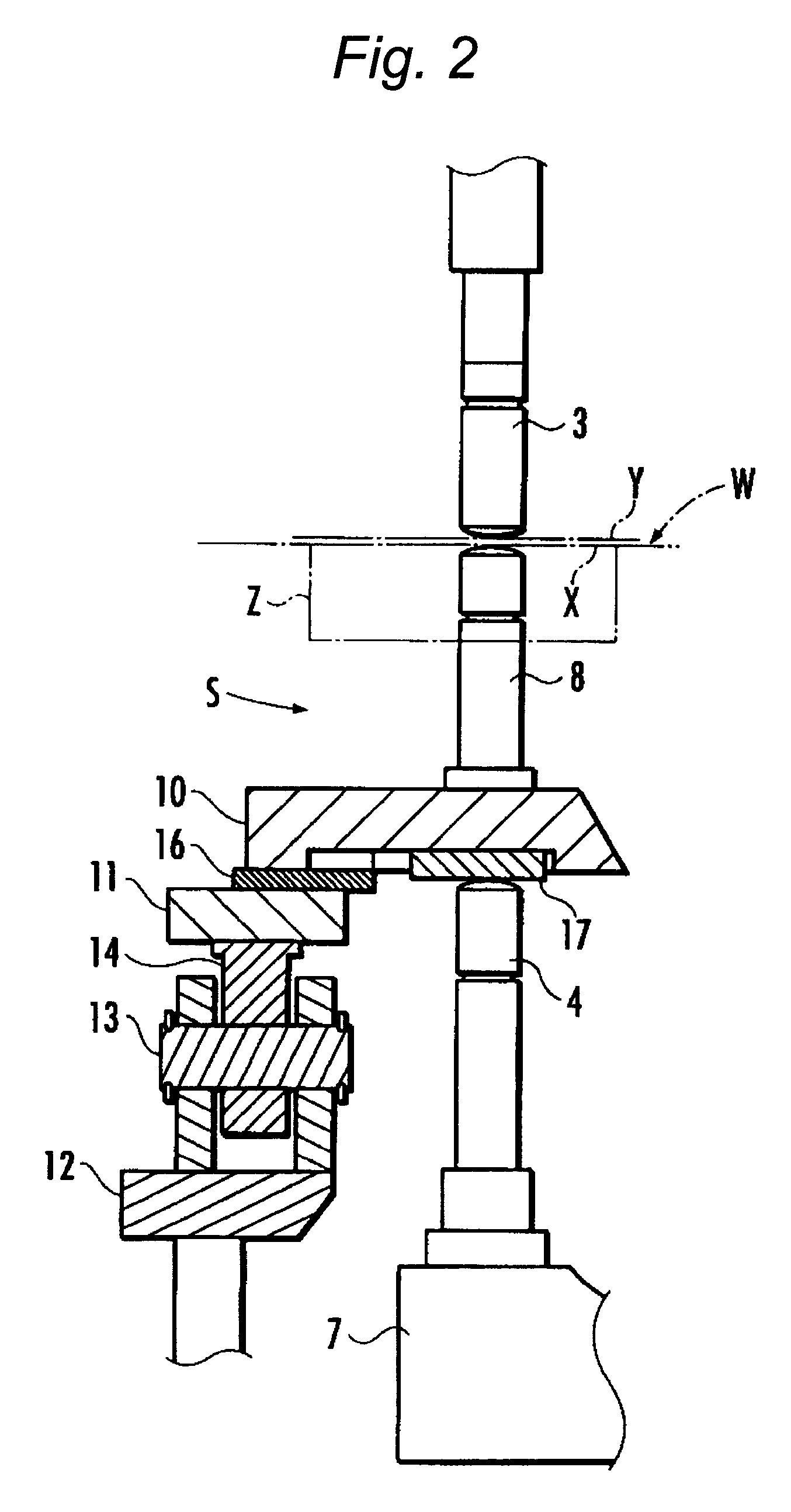Welding apparatus and welding method
a welding apparatus and welding method technology, applied in the direction of soldering apparatus, manufacturing tools,auxillary welding devices, etc., can solve the problems of complex construction of welding guns, difficult to compactly construct welding guns, and second electrode tips
- Summary
- Abstract
- Description
- Claims
- Application Information
AI Technical Summary
Benefits of technology
Problems solved by technology
Method used
Image
Examples
Embodiment Construction
[0024]A description of an embodiment of the present invention will be given on the basis of drawings. FIG. 1 is an explanatory diagram illustrating a construction of essential portions of a welding apparatus in accordance with the embodiment. FIG. 2 is an explanatory cross-sectional view of the welding apparatus in accordance with the embodiment. FIGS. 3A to 3D are explanatory diagrams illustrating a welding operation using the welding apparatus in accordance with the embodiment.
[0025]As shown in FIGS. 1 and 2, the welding apparatus in accordance with a exemplary embodiment of the invention is constituted by a welding gun 1 and an electrically conductive part 2. It should be noted that a work W which is subjected to welding in the embodiment is one in which another panel part Y is superposed on an upper surface side of a panel part X serving as a base, and the panel part X integrally has a hollow portion Z on its lower side. The welding apparatus in accordance with the embodiment we...
PUM
| Property | Measurement | Unit |
|---|---|---|
| electrical conduction | aaaaa | aaaaa |
| conductive | aaaaa | aaaaa |
| electrically conductive | aaaaa | aaaaa |
Abstract
Description
Claims
Application Information
 Login to View More
Login to View More - R&D
- Intellectual Property
- Life Sciences
- Materials
- Tech Scout
- Unparalleled Data Quality
- Higher Quality Content
- 60% Fewer Hallucinations
Browse by: Latest US Patents, China's latest patents, Technical Efficacy Thesaurus, Application Domain, Technology Topic, Popular Technical Reports.
© 2025 PatSnap. All rights reserved.Legal|Privacy policy|Modern Slavery Act Transparency Statement|Sitemap|About US| Contact US: help@patsnap.com



